In this travel diary, I’ll take you through each day of my 5-day self-drive adventure. Whether you’re a fellow traveler planning your own car rental Larnaca experience or just daydreaming about the Mediterranean, let this story-guide ignite your wanderlust. From the driver’s seat, Cyprus unfolds in vivid color – so fasten your seatbelt, grab a cup of Cypriot coffee, and join me as we hit the open road!
Day 1: Larnaca to Limassol – Coastal Scenery and Village Charm
Morning in Larnaca
I woke up in Larnaca to a golden sunrise shimmering over the calm Mediterranean. Before hitting the road, I took a stroll along Finikoudes Beach, the palm-lined promenade. The air smelled of sea salt and strong Cypriot coffee from a nearby café. With a fresh koulouri (sesame bagel) in hand from a local bakery, I felt fueled for the journey ahead. By mid-morning, it was time to start the engine. Leaving Larnaca was effortless thanks to well-marked highways – a quick hop onto the A5 and I was cruising westward.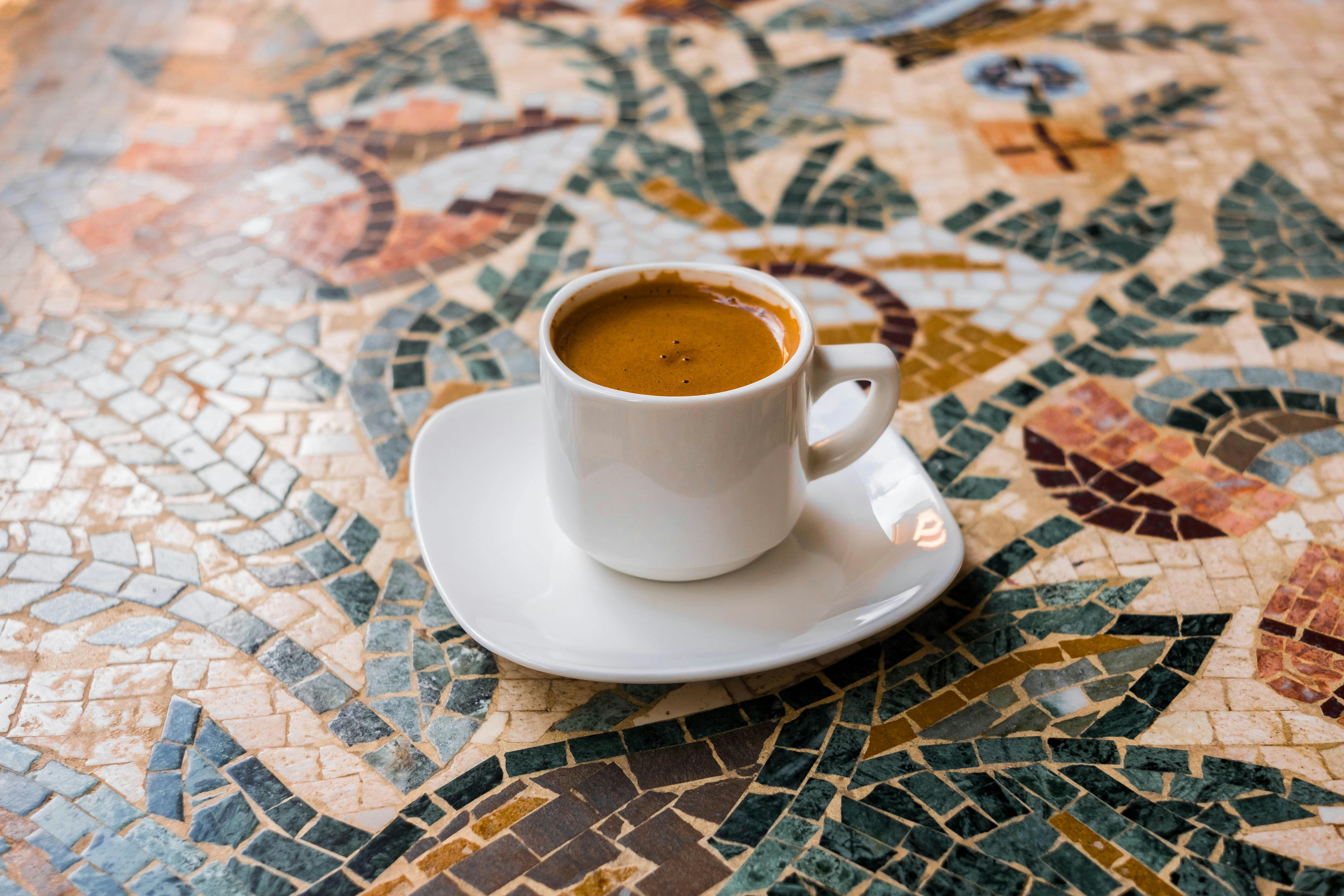
Detour to Lefkara
Half an hour into the drive, spontaneity struck. A sign for Lefkara – a village perched in the hills – tempted me off the highway. I’d heard about Lefkara’s lacework and silver artisans, so I decided to take this slight detour. The road narrowed and wound upward through rocky outcrops and olive groves. Soon, I arrived and parked in a postcard-pretty village of stone houses and vine-draped balconies. In Lefkara, I wandered on foot the cobbled lanes, watching local women meticulously embroider the famous Lefkaritika lace. One friendly shop owner proudly showed me her handmade tablecloths, and I couldn’t resist buying a small lace bookmark as a keepsake. Before leaving, I sipped a lemonade made from local lemons at a tiny café in the village square – a perfect refreshment under the late-morning sun.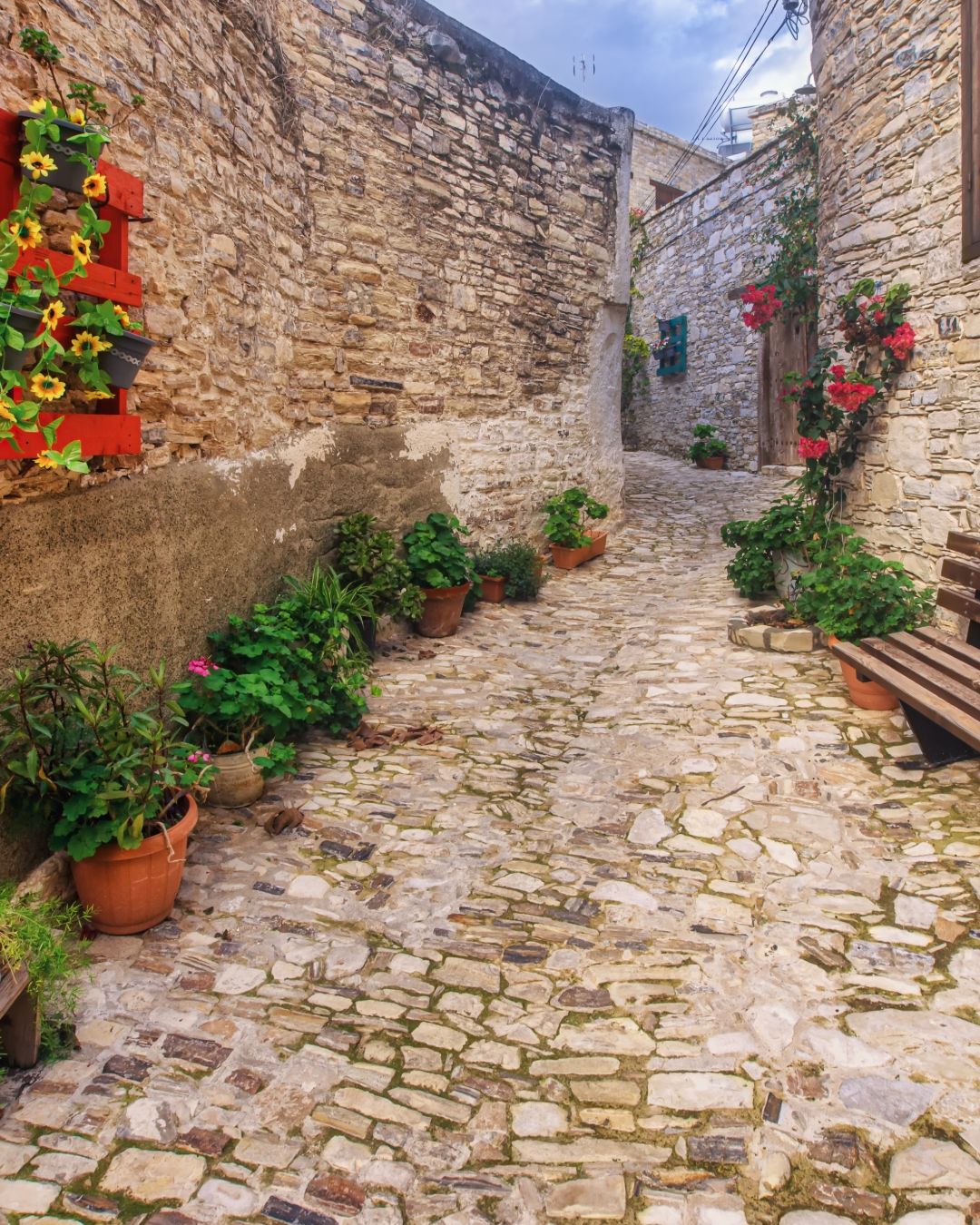
Onward to Limassol
Back on the road, I continued toward Limassol (Lemesos). The highway unfurled before me with views of the shimmering sea to my left. In under an hour, I reached the outskirts of Limassol, Cyprus’s lively seaside city. I drove straight to the Limassol Promenade (Molos area) and easily found parking near the old port – one of the perks of traveling slightly off-peak season. The afternoon was spent exploring Limassol’s mix of modern and historic: I peeked into the medieval Limassol Castle (where Richard the Lionheart allegedly married Berengaria of Navarre), and strolled the marina with its sleek yachts and fish tavernas. For lunch, I found a family-run taverna in the old town. The owner served me a plate of keftedes (Cypriot meatballs) with freshly cut fries and a village salad drizzled in tangy olive oil. As I ate, we chatted – he shared local tips about the road to Paphos and recommended a winery in the hills if I had time to stop.Sunset at Kourion
With his advice in mind, I left Limassol before sunset to catch one more sight. Just outside the city, following signs through grapevine-dotted countryside, I reached Kourion – an ancient Greco-Roman amphitheater perched atop cliffs by the sea. I arrived just as the sun was dipping low. Sitting on the amphitheater’s stone steps, I watched the sky ignite in vivid orange and pink hues over the ruins and the crescent of Kourion Beach below. The moment was magic – the kind of travel memory you know will linger for years.I decided to stay the night near Kourion, in a cozy guesthouse on the outskirts of Limassol, so I’d be ready for more adventures early next day. Falling asleep, I could still feel the day’s sunlight and hear faint waves in the distance, already excited for what tomorrow would bring.
Day 2: Ancient History and Golden Coastlines (Limassol to Paphos)
Kolossi Castle
Waking up to the sound of village roosters (a charming alarm clock at my guesthouse), I set off westward toward Paphos after a quick breakfast. The morning light was soft and the traffic sparse – ideal conditions for a relaxed drive. My first stop, just a short drive from where I stayed, was the Kolossi Castle. This 15th-century stone fortress once guarded the fertile lands and sugar mills of the area. Exploring its courtyard and climbing the spiral staircase to the rooftop, I imagined medieval knights surveying the surrounding lemon groves. A local visitor pointed out the fields beyond, noting that this region birthed the sweet Commandaria wine (a taste I made a mental note to try later).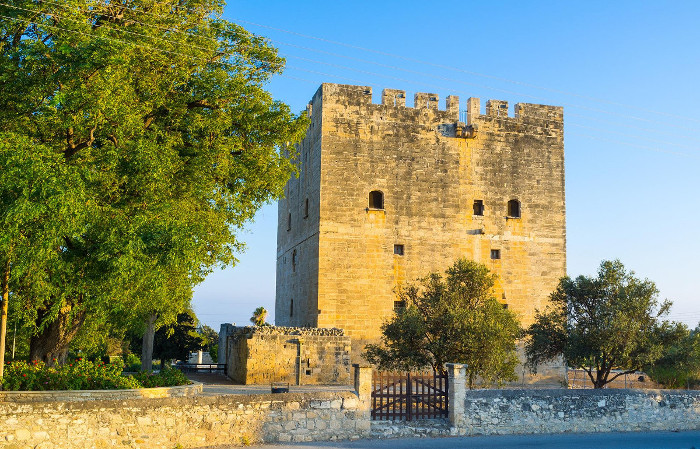
Petra tou Romiou (Aphrodite’s Rock)
Back on the B6 old coastal road, I steered towards one of Cyprus’s most legendary spots: Petra tou Romiou, also known as Aphrodite’s Rock. The road hugged the coastline, revealing dramatic vistas where turquoise waves met towering cliffs. I pulled over at a scenic viewpoint and walked down to the pebble beach. According to myth, Aphrodite, the Greek goddess of love, emerged from the foamy waters right here. The beach was nearly empty, save for a couple taking photos and an old fisherman casting his line. I felt the cool sea water on my feet and collected a heart-shaped pebble as a memento. Standing there with the sea breeze in my hair, I understood why this spot is a highlight of so many self-drive holidays in Cyprus – it’s not just a place, but a story.Paphos Archaeological Park
By noon, I arrived in Paphos (Pafos), a coastal city brimming with history. Paphos was once the ancient capital of Cyprus, and its archaeological treasures are a must-see. I headed straight to the Paphos Archaeological Park, conveniently parking my car near the harbor (the benefit of having your own car is being able to zip between sights easily). Under the midday sun, I wandered through sprawling ruins of villas and agoras. The highlight? The exquisite Roman mosaics, preserved in situ under protective shelters. I marveled at the mosaic of Dionysus riding a panther – each tiny tile still vibrant after sixteen centuries. A local guide was explaining the scenes to a small group, and I quietly listened in, learning how these floors were once in the homes of Roman nobles. It felt surreal to imagine ancient life playing out where I stood.Old Town Lunch in Ktima
After getting my fill of history, I sought out a late lunch in Paphos’s Old Town. Driving up the hill into the old center (called Ktima by locals), I found a traditional tavern on a side street. Under a canopy of bougainvillea, I indulged in a platter of fresh grilled halloumi cheese, village salad, and stifado (slow-cooked beef stew) – hearty and satisfying. The owner taught me a few words of Greek and pointed out a nearby artisan shop where I could buy Cyprus delights (almond sweets) for the road. Small encounters like these made the journey special.Tombs of the Kings at Sunset
In the late afternoon, I visited the nearby Tombs of the Kings, a UNESCO site with impressive underground tombs carved out of rock. The sun was lower and the crowds thinner by this time, giving the area an eerie tranquility. Walking among the columns and chambers carved into the earth, I felt a connection to a distant past. The only sounds were the crunch of my footsteps on gravel and the distant chirping of cicadas.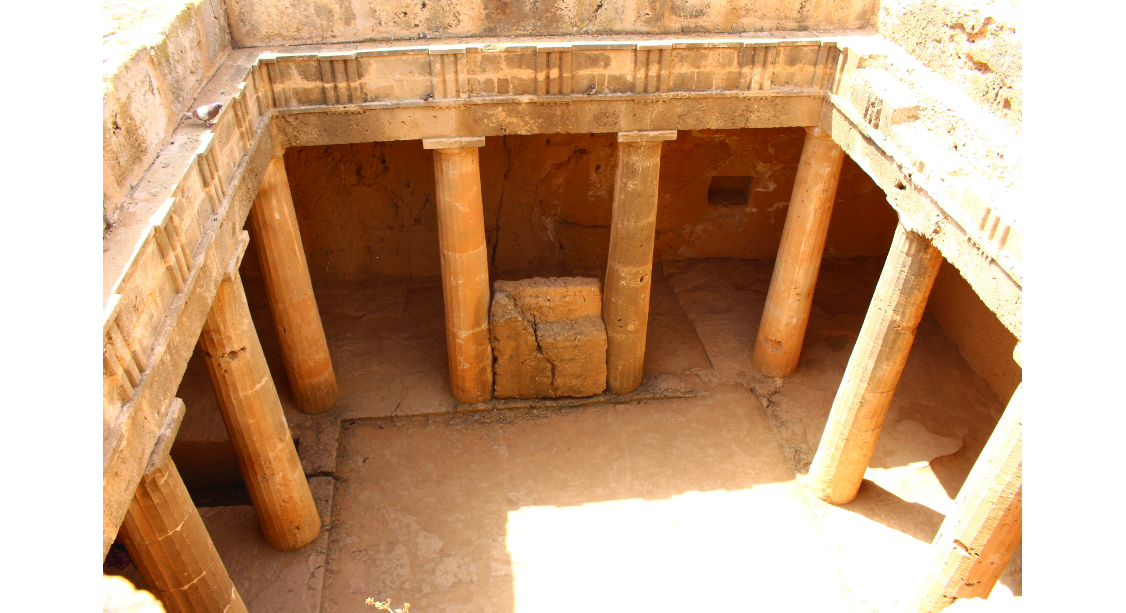
As the day wound down, I drove to my accommodation – a family-run inn tucked in a quiet Paphos neighborhood. Before bed, I sat on the balcony listening to the cicadas and distant waves, reflecting on how rich and layered Cyprus’s history is. From mythic beaches to Roman mosaics, Day 2 had been a drive through time. Tomorrow promised a wild natural beauty, and I couldn’t wait.
Day 3: Into the Blue Lagoon from Latchi by Boat
Morning Drive to Latchi
I traded history for nature on Day 3, setting my sights on the wild northwest. Early in the morning, I departed Paphos and drove towards the Latchi. The drive north took me through small villages waking up with the sun. I passed herds of goats grazing by the roadside and fields of wildflowers buzzing with bees – the Cyprus road trip just kept getting more scenic.By mid-morning, I reached the small harbor village of Latchi (Latsi), which is a gateway to Akamas’s wonders with a Safari car only. Here’s a crucial tip I learned: All rental car agreements (including my rental from Alo Car Rentals) forbid driving off-road in Akamas, and insurance won’t cover you if you attempt those rough dirt tracks – roadside assistance can’t reach it either. The heart of the Akamas Peninsula is a protected wild area with no paved roads – meaning my rental car cannot survive this dangerous road. Hence I opted for a boat tour from Latchi to swim to the famous Blue Lagoon and turned out to be the perfect solution.
Joining a small boat of fellow adventurers, I soon found myself skimming across impossibly turquoise waters along the Akamas coast. The captain pointed out sea caves and dramatic cliffs along the shoreline as we made our way to Blue Lagoon, a sheltered bay with water so clear you can see fish swimming around the anchor. We dropped anchor and jumped in for a swim – the water was cool, refreshing, and every bit as blue as the name promises. Floating on my back, I took in the view: hills blanketed in juniper and wild thyme sloping down to meet the sea. It struck me that this pristine beauty is exactly why driving in here is restricted – and I was glad it’s being preserved.
🚫 Important Reminder
Driving into Akamas off-road areas is strictly forbidden with all rental cars, including Alo Car Rentals. These roads are not paved, not covered by insurance, and roadside assistance cannot access them. For your safety and protection, always park at Latchi and take a boat tour to reach Blue Lagoon or other Akamas sights.Lunch by the Marina
Back on land by early afternoon, I had lunch at a marina restaurant in Latchi, feasting on grilled octopus and a classic village salad. The tomatoes in Cyprus are unbelievably sweet, especially by the coast where they ripen under generous sun. Over lunch, I chatted with the boat captain, who was born and raised in the area.
Scenic Return Drive to Paphos
By late afternoon, I began the drive back toward Paphos, taking a scenic inland route through the hill villages always staying on paved roads. To my left, the sun sparkled on Chrysochou Bay; to my right, vineyards and orchards rolled across the hills. I made one last stop at a winery in Kathikas village, a place recommended to me back in Limassol. As the sky turned amber, I sat on the terrace sipping a chilled Xynisteri wine — one of those slow, perfect travel moments where time seems to pause.🚘 Friendly Reminder: Enjoying Cyprus's wine culture is a must — but never drink and drive. Cyprus police conduct random alcohol checks, and the legal limit is very low. For your safety and for others on the road, always designate a sober driver or save tastings for after the day’s drive is done.
I returned to Paphos in the early evening, relaxed and grateful. The day’s adventures proved that sometimes you have to park the car and take a boat (or a hike) to truly experience Cyprus’s wild side. And importantly, I was happy I respected the rental car rules – the pristine Akamas is no place for a regular vehicle, and I’d advise anyone on a self-drive holiday in Cyprus to heed that warning. Tomorrow, the mountains call!
Day 4: Mountain Magic – Villages, Forests, and Troodos Peaks
After three days of coastal bliss, Day 4 was a complete change of scenery. I pointed the car inland, leaving the palm trees behind for the towering pines of the Troodos Mountains. Setting out from Paphos, I took the winding road towards the heart of Cyprus’s highlands. Almost immediately, the air grew cooler and scented with pine resin. The climb was exhilarating – hairpin bends revealed sweeping views of valleys dotted with tiny churches and vineyards. It felt like driving into another world, far from the sea.⚠️ Mountain Tip: Roads in the Troodos region can be steep and narrow. During winter or early spring, fog and snow are common. Choose a car category suitable for mountainous terrain (Category C or higher recommended), and always drive cautiously through bends.
Stop in Omodos Village
My first stop was Omodos, one of the island’s most charming mountain villages. Arriving mid-morning, I parked near the village square and followed the sound of church bells to the stone-paved center. Omodos has a way of slowing you down. I browsed small shops selling locally produced wine and honey, and stepped into the historic Monastery of the Holy Cross which dominates the square. In the quiet courtyard, an old man offered me a sip of his homemade zivania (a potent local grape spirit) for good luck on my journey. We laughed as it burned my throat and warmed my chest. Before leaving, I couldn’t resist buying a loaf of village bread and some almond biscotti from a bakery – road snacks for the day.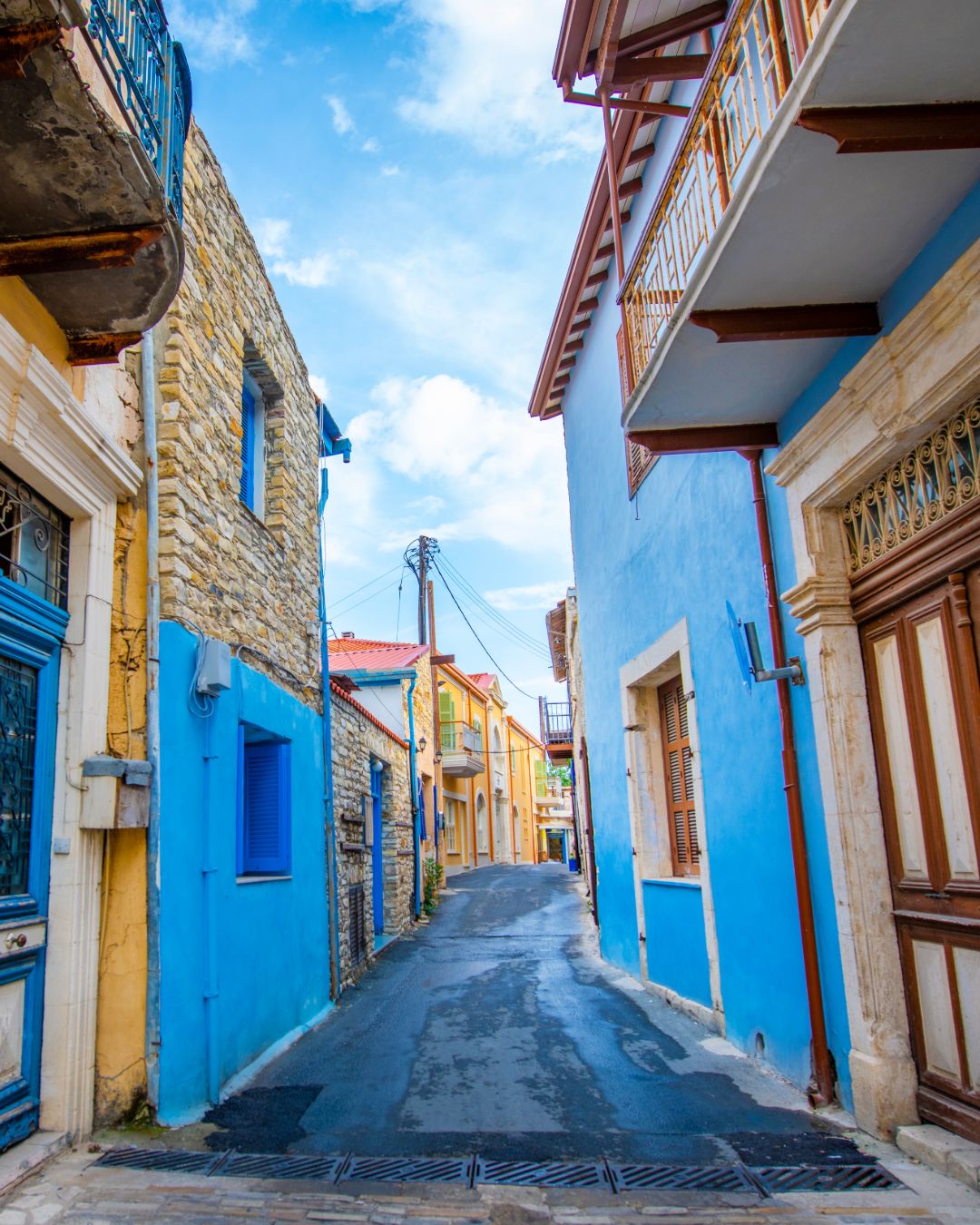
Into the Forest: Troodos National Park
Continuing upward, I headed into the Troodos National Forest Park. The road led me through cedar and pine forests, with occasional picnic sites overlooking panoramic vistas. I detoured briefly to see the Millomeris Waterfall near Platres – a short walk from the road brings you to a hidden cascade of cool water tumbling down mossy rocks. It was a refreshing nature break, and I even felt a few misty sprinkles as I stood close to the falls. Such a different kind of beauty up here, compared to the coast!Picnic at Troodos Square
By lunchtime, I reached Troodos Square, high up near Mount Olympus (the island’s highest peak). The square had a few cafés and vendors selling herbal teas and nuts. I enjoyed a simple picnic on a bench – the bread from Omodos with local halloumi cheese and ripe tomatoes I’d brought along, all while savoring the crisp mountain air. After lunch, I took a leisurely stroll on a nature trail among the pines. The silence of the forest was soothing; only the whisper of wind in the trees and occasional bird calls kept me company.Return Drive via Lefkara
Instead of rushing down, I chose a scenic route to descend the mountains on the eastern side, gradually making my way back toward Larnaca. On the way, I stopped at Lefkara – yes, the lace village was on my route again, this time from the opposite direction. In late afternoon light, Lefkara was even more enchanting. I hadn’t planned to stop again, but the thought of a second helping of that homemade lemonade was too tempting! I greeted the same café owner, who chuckled seeing me return. We exchanged travel stories – he was delighted that I had driven all around Cyprus in just a few days.With evening approaching, I drove the final stretch back to Larnaca. Descending from the hills, I watched as the sky turned a fiery orange over the plains. I pulled over once more near a viewpoint overlooking the city lights of Larnaca twinkling in the distance. I took a deep breath, savoring the blend of mountain pine still on my clothes and the sea breeze ahead.
That night, I returned to my starting point – Larnaca – completing the full circle of my journey. One day remained, and I felt a mix of contentment and a tinge of bittersweet knowing this road trip was nearing its end.
Day 5: Fond Farewell – Larnaca’s Sights and Departure
Sunrise at the Salt Lake
The last day of my road trip arrived, but I was determined to make the most of it before saying goodbye to Cyprus. I woke up early in Larnaca and drove my trusty rental car to the Larnaca Salt Lake on the city’s edge. The sunrise was gentle and pastel-hued, reflecting off the shallow waters of the lake. In winter months, this lake comes alive with flocks of pink flamingos – a spectacular sight if you’re lucky to catch it. Even in summer when the lake dries into a white salt bed, the area has a quiet, otherworldly beauty. I took a peaceful walk along the footpath by the lake, breathing in the morning calm. The nearby Hala Sultan Tekke, a historic mosque nestled among palm trees on the lakeshore, glowed softly in the golden light. It was a serene moment, as if Cyprus was gently waving goodbye.A Visit to St. Lazarus Church
After the salt lake, I headed back into Larnaca town for one final stop: the Church of St. Lazarus. This 9th-century stone church in the heart of Larnaca is one of Cyprus’s most cherished landmarks. I stepped inside to light a candle, the air thick with the scent of incense and beeswax. The carved iconostasis and ancient walls gave a sense of timeless peace. Outside, the town was just beginning to stir. I grabbed a last-minute souvenir from a nearby shop – a tiny ceramic car with “Cyprus” painted on it (a cute nod to my journey).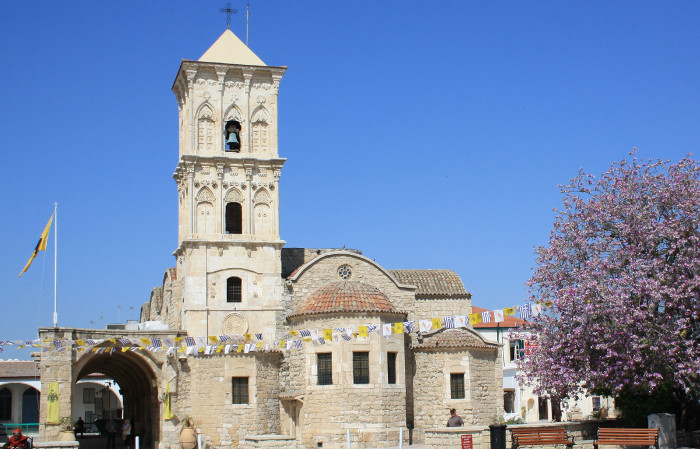
Rental Car Return at Larnaca Airport
With my flight approaching, it was time to return the car. I drove to Larnaca International Airport, which thankfully is only a short 15-minute ride from the city center. Pulling into the Larnaca airport waiting lane, Alo staff were already waiting for me for the rental return, I felt a pang of gratitude and nostalgia. This little car had been my companion for five incredible days, never missing a beat on steep mountain roads or coastal highways. The return with Alo Car Rentals was a breeze – the staff, still as warm and welcoming as on day one, asked about my trip and smiled at my tales of villages and secret beaches. It felt fitting to end the journey where it began, with the people who helped set me on my way.I walked into the terminal with sun-kissed skin, a camera full of photos, and a heart full of Cyprus. In just five days, I had witnessed the island’s diverse beauty – from the bustling promenade of Larnaca to the ruins of ancient Paphos, the wild blue of Blue Lagoon to the green heights of Troodos. Driving myself allowed me to linger where I wanted, discover village life, and chase sunsets on a whim. I knew as the plane took off that this wasn’t really a goodbye. Cyprus has a way of calling you back, especially if you’ve experienced it on your own terms.
Conclusion: Your Own Cyprus Adventure Awaits
Every journey is unique, and self-drive holidays Cyprus offer the freedom to shape your story. My 5-day diary was just one way to experience the island’s magic. The beauty of a road trip here is that you can tailor it to your interests – linger longer on a hidden beach, take that impromptu turn to an unknown village, or pause for every breathtaking sunset. With a reliable car rental from Larnaca as your travel companion, the island opens up to you, from the moment you leave Larnaca Airport to the day you (reluctantly) return the keys.Cyprus may be small in size, but it’s huge in heart, history, and scenery. In a few days you can traverse from salt flats to summits, ancient ruins to vibrant tavernas, making memories at every stop. So here’s to the open road: May your Cyprus road trip be filled with memorable turns and lovely surprises. Looking back, I’m grateful I read Renting a Car in Cyprus: 20 Things You Should Know before we set off, as its practical tips gave us the confidence to relax and savor every moment of our journey.
When you’re ready to embark, our family at Alo Car Rentals will be here in Larnaca to welcome you with a well-tuned car and plenty of local tips.
Kalo taxidi! – Safe travels, and happy driving through Cyprus.
✅ Ready to plan your own road trip?
Browse our rental car categories, check availability, and book online at
🔗 www.alocarrentals.com
🚗 Local support, flexible pickup, and insider tips — only from Alo.
🚘 Drive Safe in Cyprus
•Always carry your driving license and rental documents.
•Never drive under the influence of alcohol or substances.
•Stick to paved roads.
•Use caution in mountain regions, especially in winter.
•Follow all local traffic laws and speed limits.

